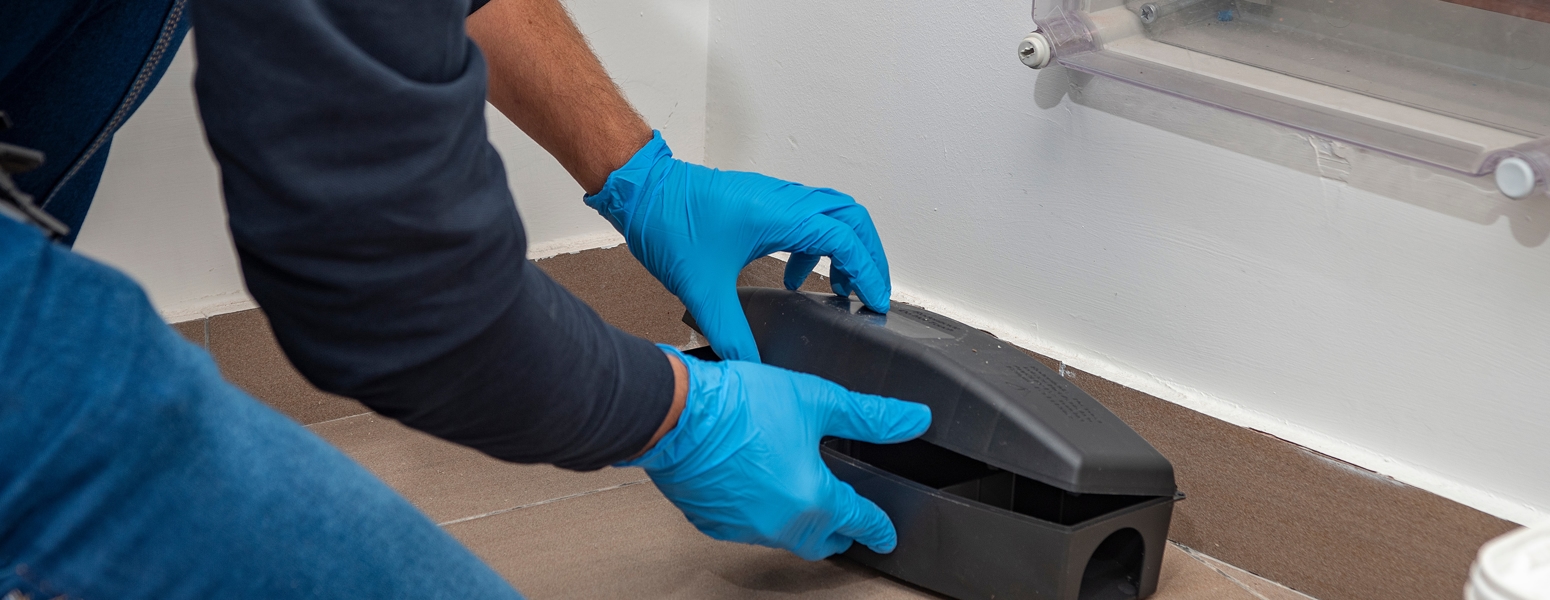Pest control is a topic people don’t often think about until they find themselves dealing with roaches, mice, or other unwanted houseguests. Most people search for a professional pest control technician in their area and choose a site that appears on the first page of search results.
Pest control SEO is the key to getting your pest control website ranked high enough on Google search to catch the attention of a potential customer.
What is SEO?
Search engine optimization (SEO) is a series of digital marketing techniques used to improve the ranking of your website in search engine results. Pages with higher search result visibility tend to get more attention. SEO is an organic way to attract new business and keep your business growing.
Companies like Google use search bots to review web pages and collect information. They move from one site to another and index them. From there, algorithms kick in, calculating hundreds of factors to create an order for search results.
If you own a pest control business in Seattle, WA, your goal is to get your website in front of people in that area who need your services. You’d want to use local SEO techniques to give your site first-page prominence in area search engine rankings.
Why is SEO Important?
The days of relying solely on traditional media are long gone. SEO is key to developing a digital marketing strategy that keeps your business relevant in the internet age. Internet searches are the primary way most brands, including pest control companies, attract new business.
How search engines review websites for rankings has evolved over the years. Most algorithms now look at how well companies use SEO to directly answer questions or provide information to a user’s query. People are more likely to stay on your pest control website instead of moving on to a competitor if you provide valid answers to their questions.
Pest control SEO represents a holistic way to market to potential customers. You can apply the knowledge gained from your SEO strategies to other digital marketing campaigns, including on social media channels.
How Can SEO Improve My Pest Control Site Ranking?
Various factors go into establishing the ranking of a website in a search engine. Things change and evolve based on human behavior and advances in technology. Below are the three main components that make SEO so valuable.
- Organic results — Your pest control website appears within a search engine results page (SERP) based on keywords or phrases entered by the user. They’re distinct from pay-per-click (PPC) ads that appear, and you can’t pay for better organic search results. Instead, you have to invest in an overall SEO strategy to boost the ranking of your pest control business.
- Traffic quality — It’s not enough to achieve a high SERP ranking. Previously, you could insert a lot of high-ranking keywords into your landing page to move up in search results. But, if someone entered “bug costume” as a search phrase and ended up on your pest control site, they would not be pleased. High-quality traffic means attracting visitors with a genuine interest in your pest control services. You accomplish this by matching a user’s search intent to your website.
- Traffic quantity — As noted earlier, users tend to click on the highest-ranking results at the top of a SERP. This is why your SEO effort and campaigns should be used to attract as many of the right users to your pest control business as possible. That gives you a better chance of converting visitors to pest control customers.
Once you understand what people want when looking for pest control, you can provide a better user experience by using SEO to enhance your business website. The better you match visitor intent, the more likely you’ll achieve a high SERP ranking. To match visitor intent, you’ll want to do keyword research to find what kind of blog posts you should post.
However, other factors matter just as much as achieving the top spot in popular search engines. Let’s look at some SEO best practices that help you achieve your goal of attracting more business to your pest control company.
Tips on Using SEO to Improve Your Website Ranking
You must align your business goals with an overarching SEO strategy to improve your website ranking. For example, if you own a local company in Clearwater, FL, does it really help you to attract traffic from Cleveland, OH?
That kind of thinking can help you learn which keywords to use to attract traffic closer to home. Understanding what you want to achieve with pest control SEO helps to guide the type of content you create for your website.
You should also consider technical SEO or how the structure of your pest control site can improve your SERP ranking.
As you can see, there’s much more to SEO than embedding your content with high-ranking keywords. Below are some tips on how to use various SEO techniques to increase your pest control company’s online visibility and relevancy.
1. Review the Technical Structure of Your Pest Control Website
Bots scanning your page for indexing see nothing but text. They will move from one link to the next and analyze the content. It doesn’t matter how great your logos look or if you picked high-quality images. It’s about how easily the bots can download those images and then locate relevant content for users.
Issues like long URLs, slow page speed, and dead links can negatively impact your ranking. You also want to ensure that you aren’t duplicating content by only changing a few words. Try to include diverse content to avoid being penalized by search engines.
Other technical elements to consider include:
- Setting up a sitemap containing all site URLs
- Inclusion of internal links
- Webpage security
Improving these technical elements will positively impact your pest control marketing efforts so your business shows up with other pest control companies online.
2. Create Relevant Content
If someone goes to a search engine and enters “pest control for bats,” they expect results for companies that specialize in getting rid of bats. To attract those customers, you should have optimized content on your pest control website describing how you handle those situations.
It also helps to set up different formats for content. In addition to blog posts, you can embed how-to videos on how to deal with bats in your home. Relevant content is what search engines care about when deciding on page rankings.
Keyword research is essential to achieving a #1 ranking for your pest control site. Without good keywords, it’s almost impossible for potential customers to locate your company online. Once you identify terms that tie back to relevant topics, convert them to pest control keywords and use them in your content. You should also include related terms that your audience might use.
The entire content creation process should be used to answer questions that are popular in the pest control industry. Having this information on your site will give you more content to post on social media and reach even more people in your area.
3. Attract High-Quality Backlinks
A backlink is a link to your content from another website. The best way to attract high-quality backlinks is by establishing yourself as a pest control authority. Doing so also helps distinguish you from other competitors in your area.
Instead of focusing on casting a wide net and attracting attention from everyone, focus on an inbound content strategy that draws in a specific audience. You’ll attract more backlinks when you establish a reputation as a company that can deal with certain pest control situations.
Factors that determine the quality of a backlink include:
- The popularity of the linking site
- The relevance of the site linking back to your content
- The trustworthiness of the linking site
This whole process is often referred to as link building. Link building is a strategy that you employ to get more sites linking to your website. It could include reaching out to people to let them know you have a blog post that might help their readers. Or it could involve writing guest posts for other sites and inserting a few links to your site in that content.
4. Perform A/B Testing
A/B testing is an SEO strategy that helps you evaluate the topics on your website. This method uses data to compare different versions of the same piece of content to decide which performs better with potential pest control clients. That way, you can improve your chances of making content relevant to audiences seeking your services.
For example, you might use A/B testing to find out if audiences like your website design. Perhaps you want to test out a certain format or image on a post – you can use your marketing software to create two versions of your web design and see which performs better.
5. Use Long-Tailed Keywords
Search engines have become much better at understanding the relevance of different topics. Consequently, it’s become more competitive to break through the crowd using shorter keywords.
To set yourself apart, try incorporating long-tailed keyword phrases containing three or more words to achieve a better ranking on relevant topics.
Additionally, when you’re performing your keyword research, you should see information on the keyword difficulty. It’s important to go after a variety of keywords that are high-volume searches with high difficulty, but also some lower-volume searches with low difficulty.
6. Focus on User Experience
Setting up optimized images or improving your page speed makes a big difference to visitors. Attention to those details encourages users to remain on your site longer. Think about it – when you’re searching for a pest control company and the page takes forever to load, will you wait or will you just find another site? Most users will go back to the search engine to find a better website.
Other metrics you can work on to make users feel more comfortable include:
- Adding interactive elements to your page
- Making the website visually appealing
- Cutting down on redirects
- Enabling browser caching
- Using cookies to save user sessions
7. Use Internal Links
Add internal links to other content on your website. Doing so helps search engines understand the hierarchy of your website and establish your authority on a topic. Think about where you’re placing your pest control links, the kind of anchor text used, and how much you link to a specific page. That helps Google, Bing, and other search engines establish priority for various pages. SEO managers often think of this as “SEO juice.” The more SEO juice you can add to a page, the better. Internal linking is especially critical for larger websites containing a lot of content.
8. Optimize Your Site for Local SEO
As we mentioned before, local SEO is essential for pest control companies because you only service a certain area. Reaching customers in that area is far more important than reaching users outside of that area. Keeping that in mind, you should create a Google Business Profile, so that when customers search for a pest control company, they have all the information from you they need – your hours, phone number, website, service area, etc.
You’ll also include your address in this information because that will help you show up on Google maps when potential customers search there for a pest control business. One of the best ways to improve your local SEO is to gather reviews. For example, when a customer leaves a Google review, you’re more likely to rank higher. The more reviews you have, the better.
Pro tip: Check out our definitive guide to reputation management here. This will help you develop an entire strategy for reviews.
Get Help With Your Pest Control SEO Marketing Strategy
Doing this all on your own might sound difficult, which is why we suggest finding pest control SEO services to help you out. An SEO agency like ours can manage your strategy and digital marketing so you only have to worry about your customers.
Scorpion works with pest control companies to create a full-scale SEO marketing strategy, helping them compete in local and national markets. Find out more about how our SEO services can expand your pest control company’s reach by scheduling a consultation with one of our marketing experts.
Let’s talk about pest control SEO.



